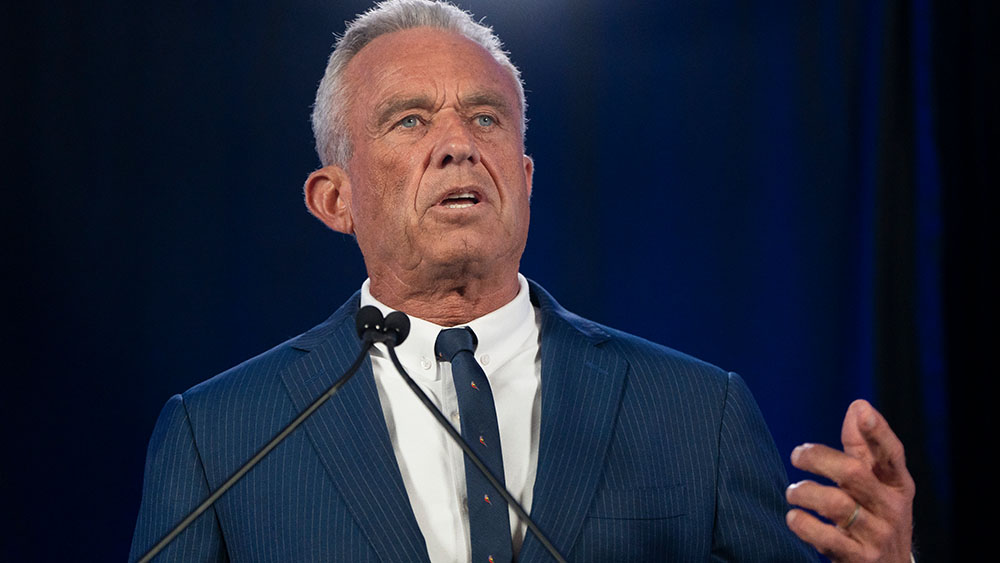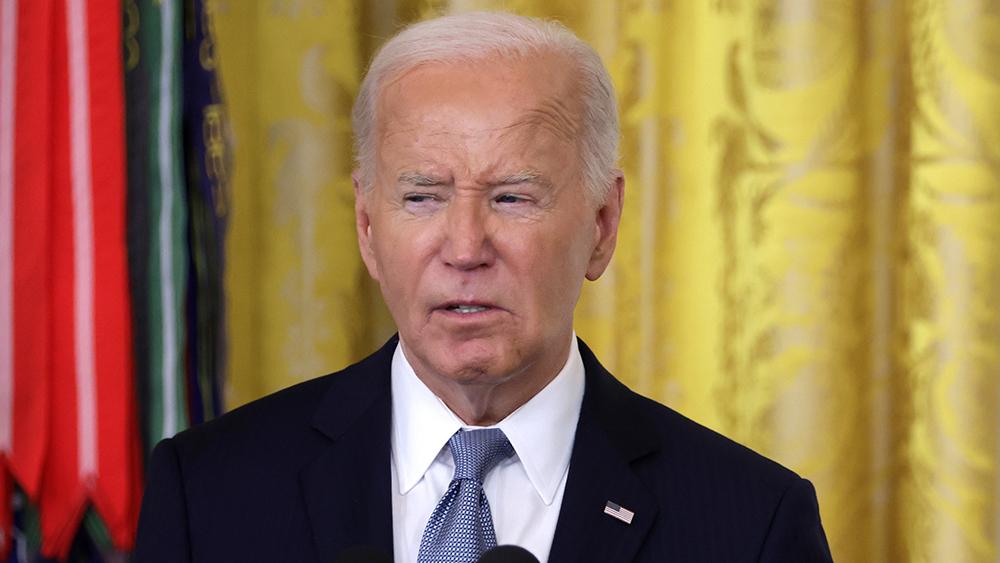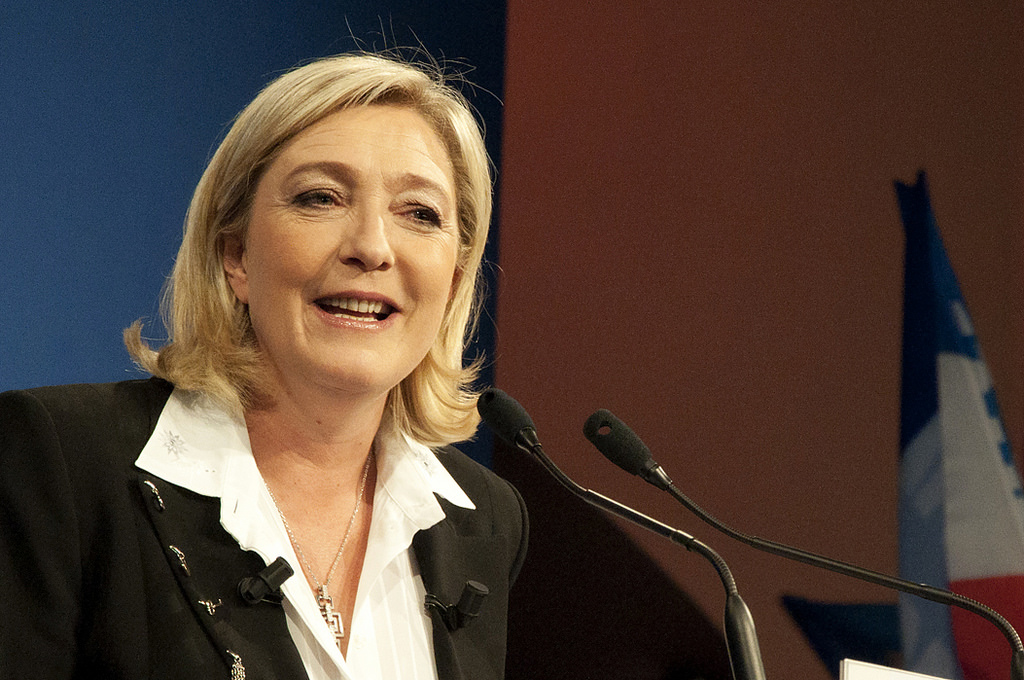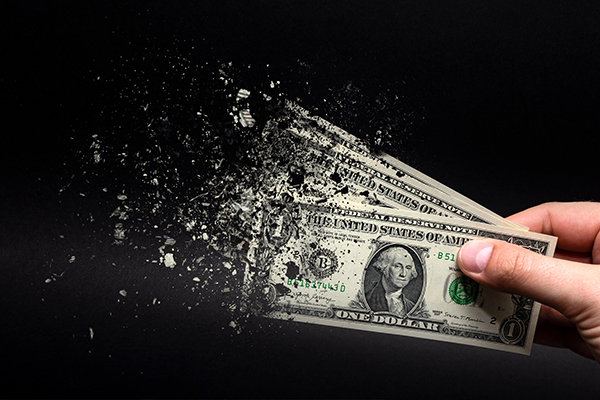Gold reaches all-time high amid escalating trade tensions
03/30/2025 / By Willow Tohi
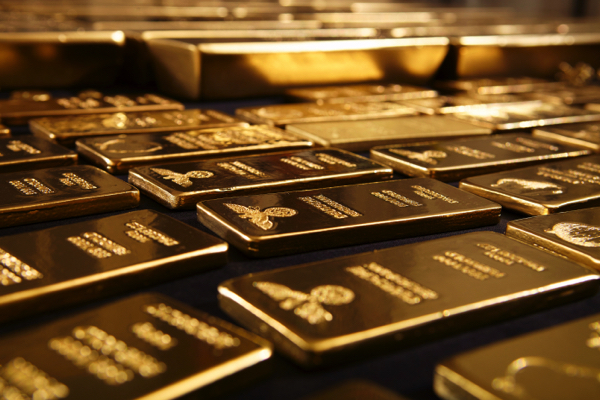
- Gold prices surged to an all-time high ($3,086.70/oz) amid escalating U.S.-led trade tensions, marking its 18th record this year as investors sought safe-haven assets.
- President Trump’s new 25% tariffs on foreign-made cars and parts sparked fears of retaliation (e.g., Canada, EU), worsening risk sentiment and boosting gold demand.
- Wall Street declined, and the U.S. Dollar Index (DXY) dropped 0.33%, supporting gold’s rise (inverse dollar correlation). Other metals like silver and platinum also saw weekly gains.
- Despite trade tensions, U.S. labor (224K jobless claims) and GDP (2.3% Q4 growth) showed resilience, while Fed rate cut expectations (64.5 bps by 2025) remained intact.
Gold prices surged to a new all-time high on Friday, as investors flocked to the safe-haven asset amid escalating trade tensions sparked by U.S. President Donald Trump’s latest tariffs. This marks the 18th record high for the precious metal this year, reflecting the growing uncertainty and risk aversion in global markets.
Why it matters
The rise in gold prices underscores the ongoing economic and political instability, particularly as trade tensions between the U.S. and other nations intensify. This development has significant implications for global financial markets, currency values and economic policies.
What happened
Spot gold climbed 0.6% to 3,074.43 an ounce as of 02:41p.m. EDT (1839GMT), after hitting an 18th record high at 3,086.70 earlier in the session. Bullion is up 1.7% this week and is on track for a fourth straight weekly gain. U.S. gold futures settled 0.8% higher at $3,114.30.
Trade war jitters
The surge in gold prices was primarily driven by President Trump’s announcement of 25% tariffs on cars and automotive parts not manufactured in the United States. This move has reignited fears of a global trade war, with Canada and the European Union (EU) threatening to retaliate. The uncertainty has led to a sharp increase in demand for safe-haven assets like gold.
Impact on markets
Consequently, risk appetite has deteriorated, with Wall Street trading in the red. The U.S. Dollar Index (DXY), which measures the performance of the dollar against a basket of six currencies, has dropped 0.33% to 104.31. This weakening of the dollar further supports the rise in gold prices, as the metal is typically inversely correlated with the greenback.
Economic indicators
Despite the trade tensions, the U.S. labor market remains firm, with the unemployment claims report for the last week coming in at 224,000, slightly below expectations of 225,000. The final reading of Q4 2024 GDP came in at 2.3% QoQ, up from the previous estimate of 1.9%, though just below the forecast of 2.4%. Pending home sales declined 3.6% year-over-year in February, marking an improvement from January’s steeper 5.2% drop, suggesting a modest recovery in the housing market.
Fed policy and interest rates
The market is currently pricing in 64.5 basis points of Fed rate cuts by the end of 2025, starting in July. The Federal Reserve has held interest rates steady so far this year but hinted at a potential half-percentage point in rate cuts later in the year. The Personal Consumption Expenditures (PCE) price index increased 0.4% in February, slightly higher than the 0.3% rise expected by analysts, but this is unlikely to significantly alter rate cut expectations.
Technical outlook
Gold price registered a new all-time high of 3,059, and it appears that buyers are stepping in, putting a test of 3,100 in the near term back on the table. The Relative Strength Index (RSI) suggests that buyers are gathering steam, with the index turning overbought. However, traders should be aware that in aggressive movements, the most extreme level would be 80. The next resistance for XAU/USD would be 3,059, with support levels at 3,050, 3,000, 2,956, 2,900, and the 50?day Simple Moving Average (SMA) at 2,887.
Other precious metals
Spot silver fell 1.4% to 33.93 an ounce, platinum eased 0.7979.10, and palladium was down 0.3% to $972.13. All three were set for weekly gains, reflecting the overall positive sentiment towards precious metals in the face of economic uncertainty.
Conclusion
The renewed trade war concerns and the resulting market volatility have pushed gold prices to new record highs. As investors continue to seek safe havens, the precious metal is likely to remain a popular choice. The upcoming release of the Fed’s preferred inflation gauge, the Core Personal Consumption Expenditures (PCE) Price Index, will be closely watched for further insights into the direction of monetary policy and its impact on gold prices.
Sources include:
Submit a correction >>
Tagged Under:
big government, dollar demise, gold, gold prices, gold report, market crash, money supply, pensions, precious metal, risk, tariffs, trade wars
This article may contain statements that reflect the opinion of the author
RECENT NEWS & ARTICLES
COPYRIGHT © 2017 BIG GOVERNMENT NEWS




